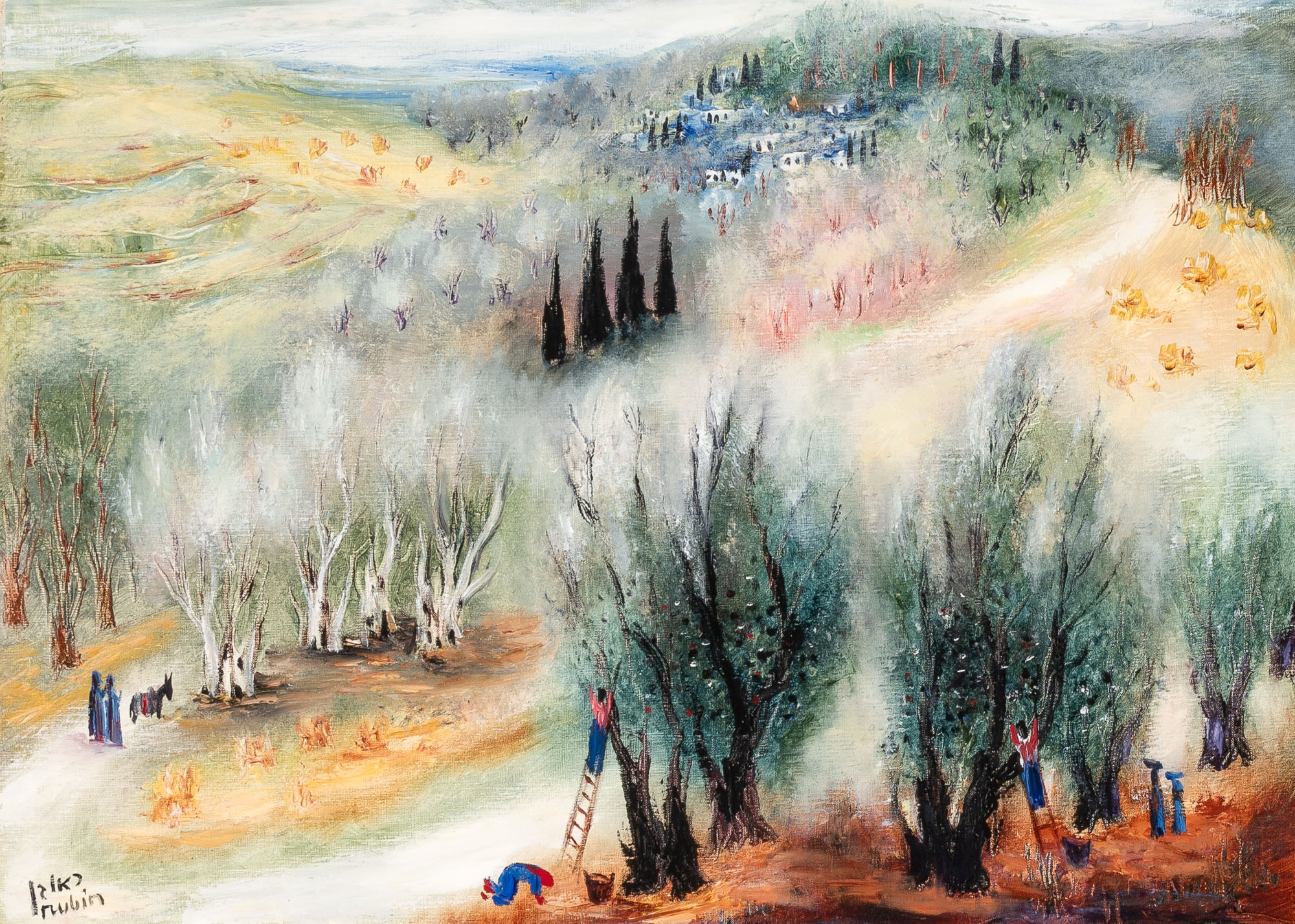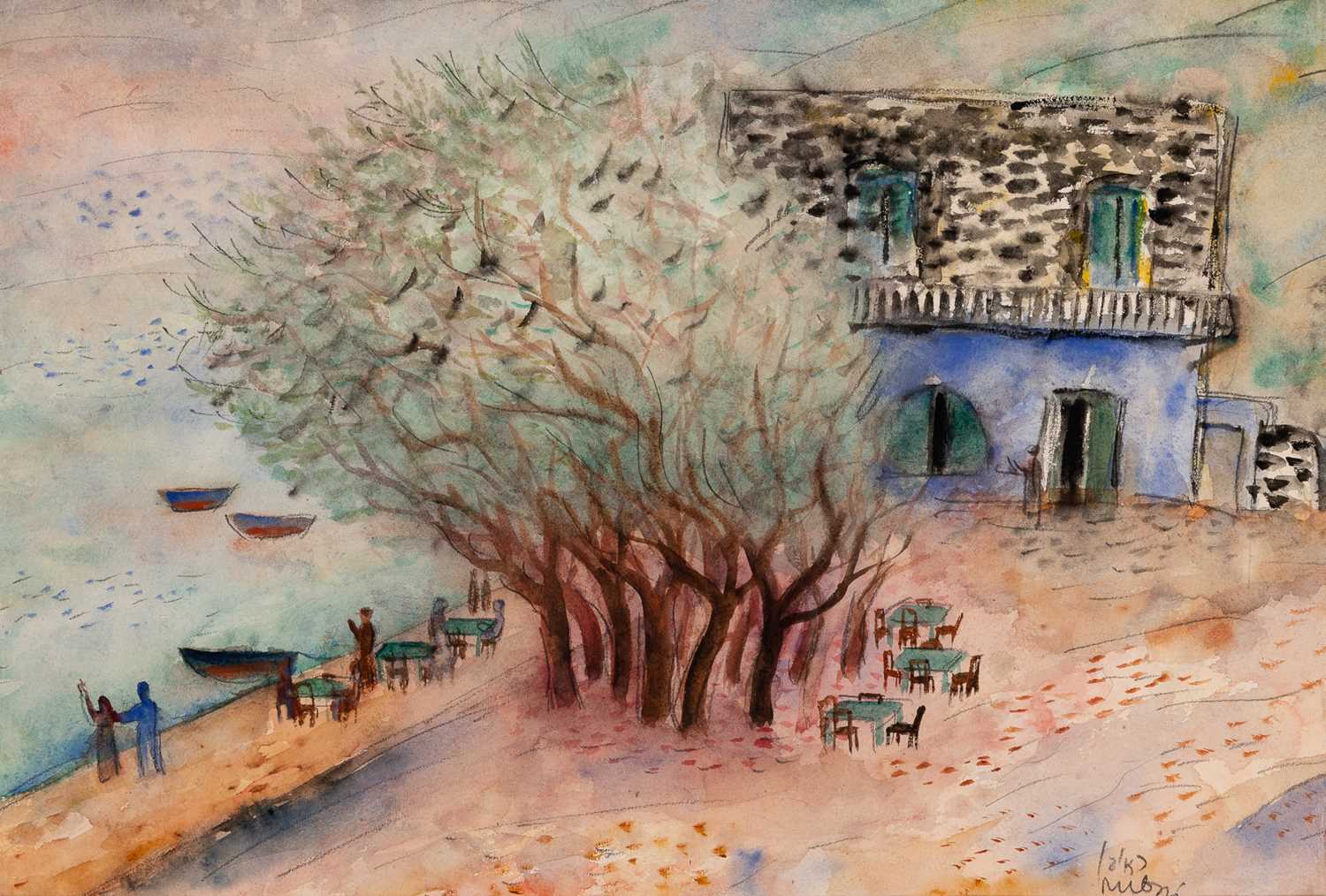
Reuven Rubin
Romanian/Israeli, 1893-1974
Reuven Rubin was a Romanian-born Israeli painter whose work helped shape the visual identity of early Israeli art. After moving to what was then Palestine in 1923, Rubin became a key figure in the development of the Eretz‑Yisrael style—an approach rooted in local landscape, light, and cultural symbolism.
Trained at the Bezalel School of Art in Jerusalem, Rubin participated in some of the first art exhibitions in the city in the early 1920s. In March 1924 he held his first solo exhibition at the Tower of David in Jerusalem, a moment often cited as pivotal in his emergence as a modernist voice in the Yishuv. His work combined modern European techniques with a deep sensitivity to place, often depicting biblical themes, local people, and the landscapes of Israel. By the 1930s, his palette and technique shifted: his canvases became darker and more dreamlike, and his imagery moved more overtly toward Jewish‑Biblical subject matter.
In 1932, Rubin became the first Israeli artist to hold a solo exhibition at the Tel Aviv Museum of Art. Over time, his unique palette and lyrical compositions earned him recognition both in Israel and internationally. Today, his legacy is preserved at the Rubin Museum in Tel Aviv, housed in the artist’s former home, which holds a comprehensive collection of his work and archives.
Rubin’s paintings remain central to the story of Israeli modernism, rooted in national identity, yet informed by broader currents in 20th‑century art.





